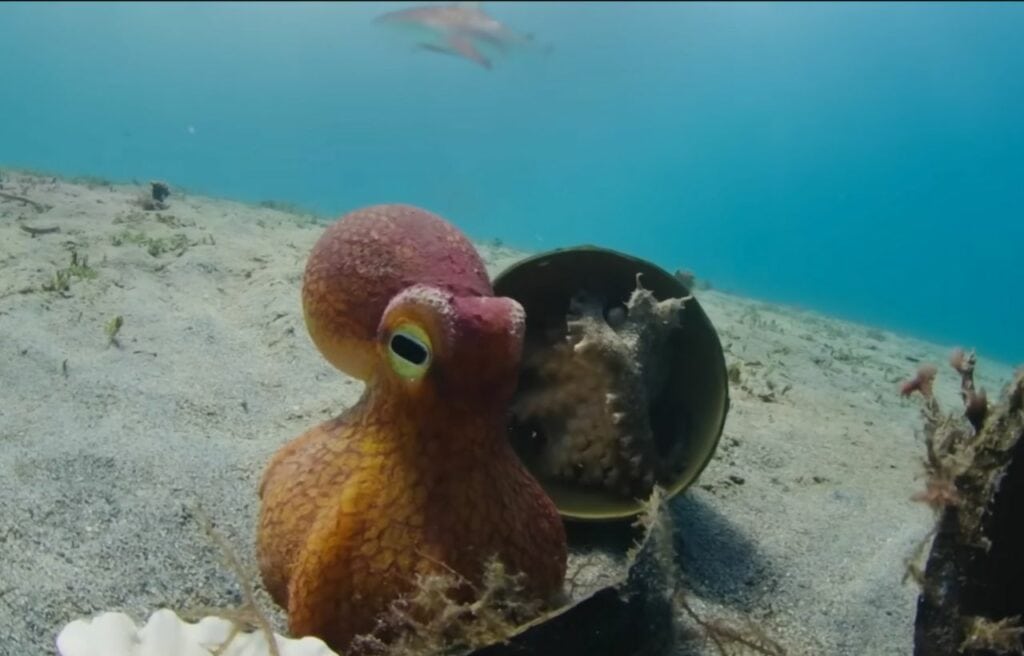
In the ocean’s wide expanse, survival hinges on being smart and inventive.
The BBC series “Spy in the Wild,” narrated by the esteemed David Tennant and captured by John Downer Productions, showcases an astonishing moment of interspecies collaboration.
The coconut octopus’s use of a robotic ally to avoid predators is an incredible display of smarts and adaptability.
A Resourceful Alliance
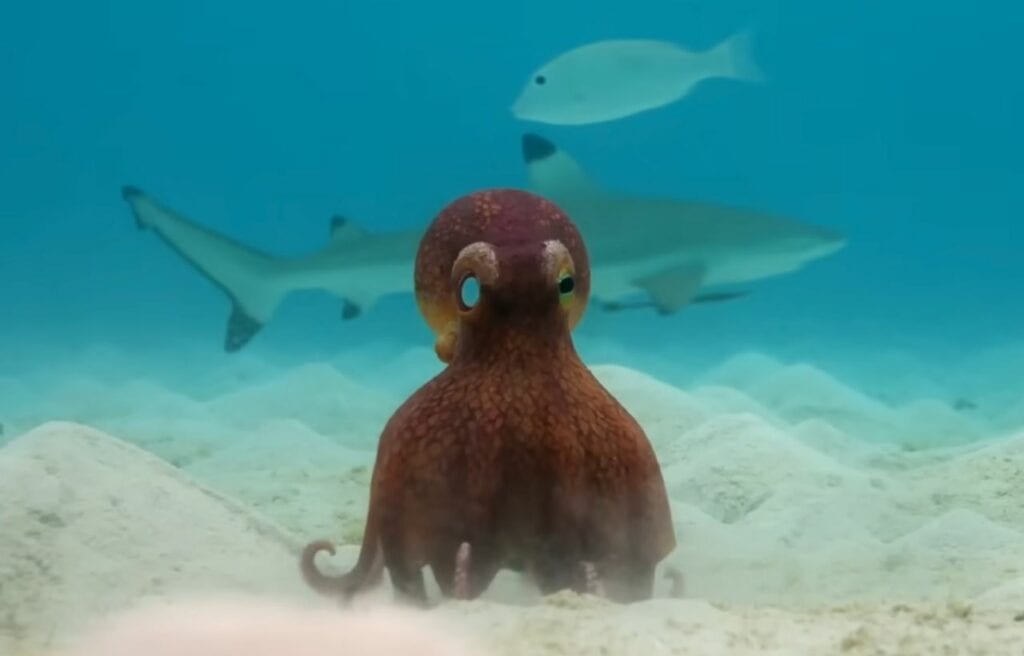
source: BBC – youtube
The ocean is a dangerous place for an octopus, especially with blacktip sharks around.
Blacktip sharks, with their keen senses, are formidable hunters. For a coconut octopus, the stakes are high, and the predators are always just a flick of a tail away.
Amidst the aquatic hunt, a piece of hollow bamboo presents itself as a precarious refuge for the octopus.
Enter the spy— a robotic octopus, indistinguishable from a real one but devoid of the scent that could betray its biological counterpart. Equipped with a domed coconut shell, perfectly suited to shield the entrance of the bamboo, the robotic creature approaches.
The real octopus, with a brain well-versed in the language of survival, contemplates the offering.
A Test of Wit and Will
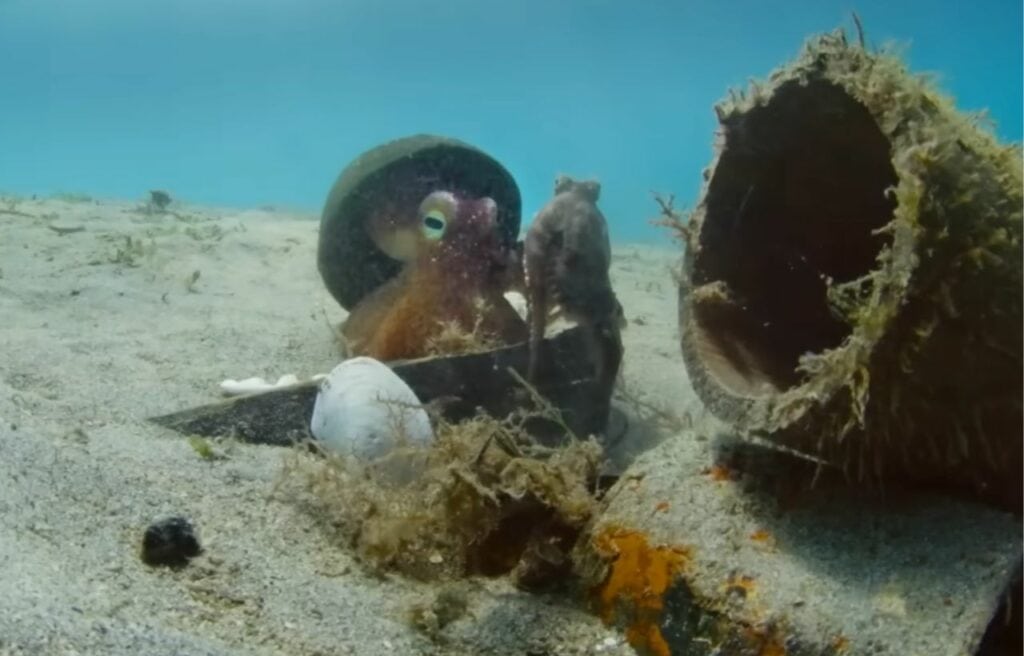
In moments where life hangs in the balance, the intelligence of the octopus is undeniable. As the sharks prowl nearby, a decision must be made swiftly.
Carefully, with the stealth of a seasoned thief, the octopus reaches for the shell. The gesture is delicate, intentional, and precise—aimed at evading any undue attention from the circling sharks.
It’s a sign of deep intelligence to anticipate the thoughts of others, and the octopus does so with finesse.
With the coconut shell in place, the octopus quickly secures its safe spot. It’s a perfect fit—a testament to the creature’s quick thinking and problem-solving prowess.
The danger passes, the sharks, now uninterested, glide away in search of more promising prey.
The Aftermath of Ingenuity
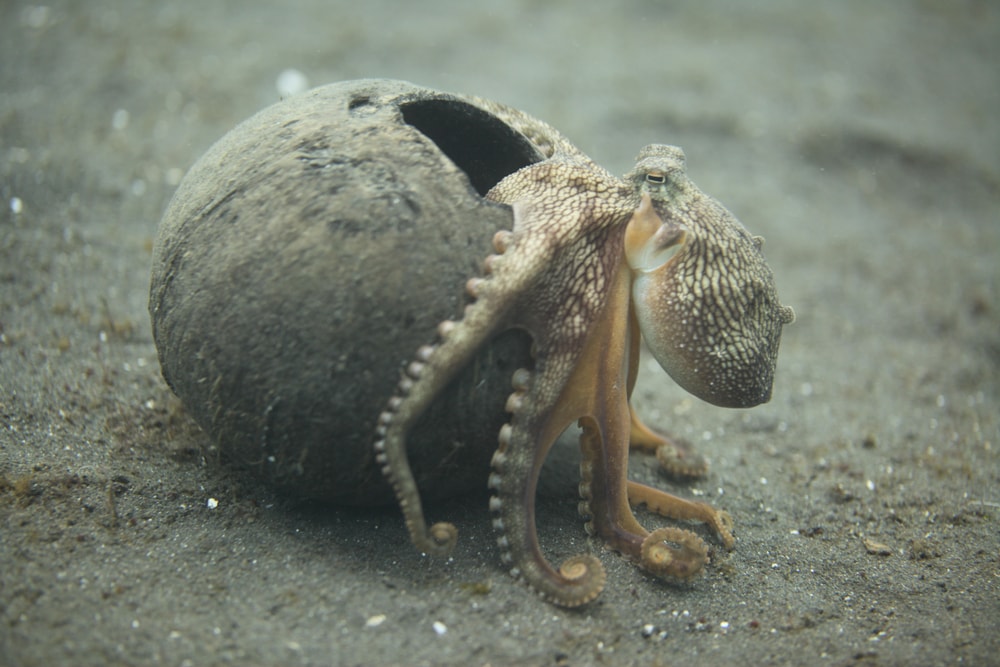
Once the coast is clear, the octopus reveals the true depth of its character.
No longer in hiding, it stretches out a tentacle towards its robotic collaborator—a tangible expression of acknowledgment and perhaps, in the most anthropomorphic sense, gratitude.
In the underwater silence, the octopus embraces the spy with its tentacles, an action perceived as a sign of acceptance. The octopus’s friendly gesture shows that it may understand and respond to social cues.
In a wonderful display of acceptance, the octopus thus treats its new ally as a comrade in the deep-sea dance of life and predation.
Coconut octopuses are known for their impressive problem-solving skills. They have been seen using tools and objects to shield themselves from predators, showcasing a level of intelligence that is rare in invertebrates.
These behaviors have captivated the scientific community and continue to surprise those who study marine life.
Nature’s Marvels
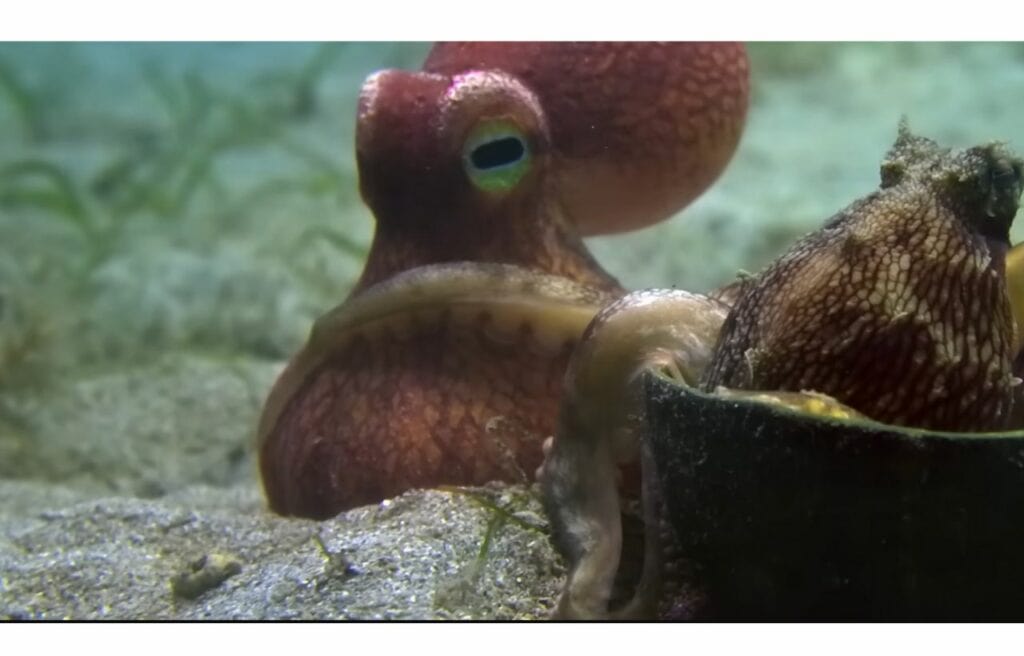
This enthralling episode from “Spy in the Wild” not only entices us with the thrill of an undersea escape but also reminds us of the complex cognitive abilities possessed by the inhabitants of our oceans.
The coconut octopus’s story, a blend of nature’s raw survival instinct and unexpected fellowship, resonates as a testament to the wonders that lie beneath the waves.
Thanks to innovative technology and the insightful storytelling of BBC’s captivating series, we gain a glimpse into these sophisticated behaviors, offering a deeper appreciation for the marvels of marine life.
For those intrigued by this story, the episode from “Spy in the Wild” offers even more remarkable insights into animal behavior. It’s an invitation to explore the intelligence of the coconut octopus and the conservation of its habitat.
The BBC’s “Spy in the Wild” series employs state-of-the-art robotic animals equipped with cameras to observe and document the behaviors of wildlife in their natural habitats. This innovative approach allows for a close-up look at nature’s marvels without human interference.







